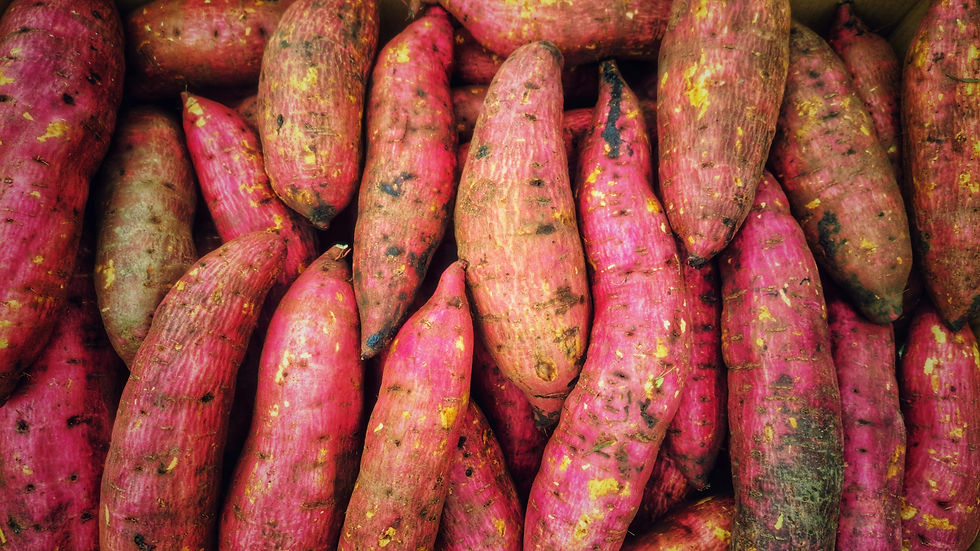Chard, it's many names & its Goosefoot family
- Chef Kelly Unger
- Oct 5, 2022
- 2 min read
Bright Lights, Fordhook Giant, Ruby Red, Rainbow, Rhubarb chard, and Lucullus are some variety names of this beautiful green. Swiss chard or just “chard” also has a few other names it goes by, in case you needed more. It is also called silverbeet, perpetual spinach, spinach beet, stem chard, seakale beet and still more that I won’t confuse you with. Chard is in the Goosefoot and Amaranth botanical family of edible weeds, leaves and seeds. It’s fellow family members are: amaranth, beets, epazote, fourwing saltbush, Good King Henry, huauzontle, lamb's-quarters (quelites) magenta spreen, orach, quinoa, and spinach. You can see the family resemblance to spinach, can't you, in the leaves. An excellent education on this and other botanical families and vegetables in general can be found in the book Vegetable Literacy by Deborah Madden.
Chard is very high in potassium, magnesium, iron and vitamin A, C and K. All parts of the chard plant are edible - leaves, stems and even the root. While you wouldn’t necessarily grow chard for the root, it can be eaten. Use chard as you would any leafy green - raw or cooked. Chard's flavor is delicate enough to be eaten raw. I like to sauté it and include it in pasta dishes and soups.
The main points for me about chard and it's botanical family are:
chard is healthy and should be enjoyed as part of a mix of greens in your diet. A mixture of kale, chard, and collards in a recipe rounds out health benefit, texture and flavor
Eating seasonal greens keeps you healthy
sharing all of these members of chard’s botanical family highlights that there are so many healthy and healing edible plants we have lost touch with. We have gotten into a rut with our food. Farmers often don’t take chances in growing wide varieties of vegetables because we’ve never heard of them and aren’t adventurous enough to try them, so we keep this predictable cycle going of what we eat. But if we can tap into curiosity and educate ourselves about other varieties of fruits and vegetables, we can then ask our farmers to please grow them. If they feel their effort will be rewarded with sales, they will be willing to grow greater variety! Or we can try growing these things at home. So I’m trying to do my part, friends, to peak your curiosity about the wider edible plant world.
In the meantime, there are plenty of great recipes to use chard this season. This week I’m sharing two recipe collections. The first is; 19 Swiss Chard Recipes That Will Make You Wonder “Spinach, Who?” from Bon Appetit And the second is: 29 Swiss Chard Recipes for Never-Boring Greens from Epicurious
Enjoy!!




Comments